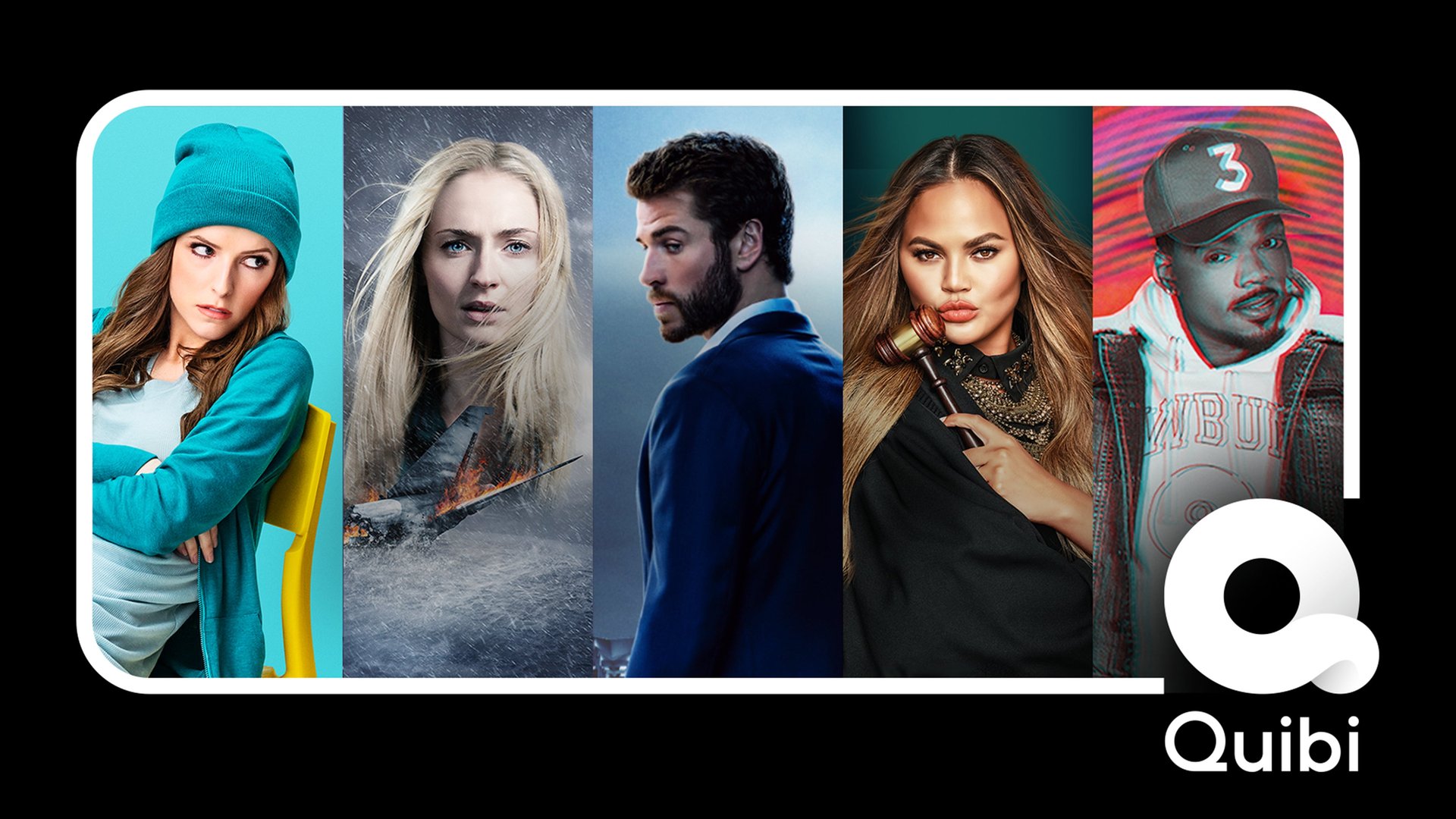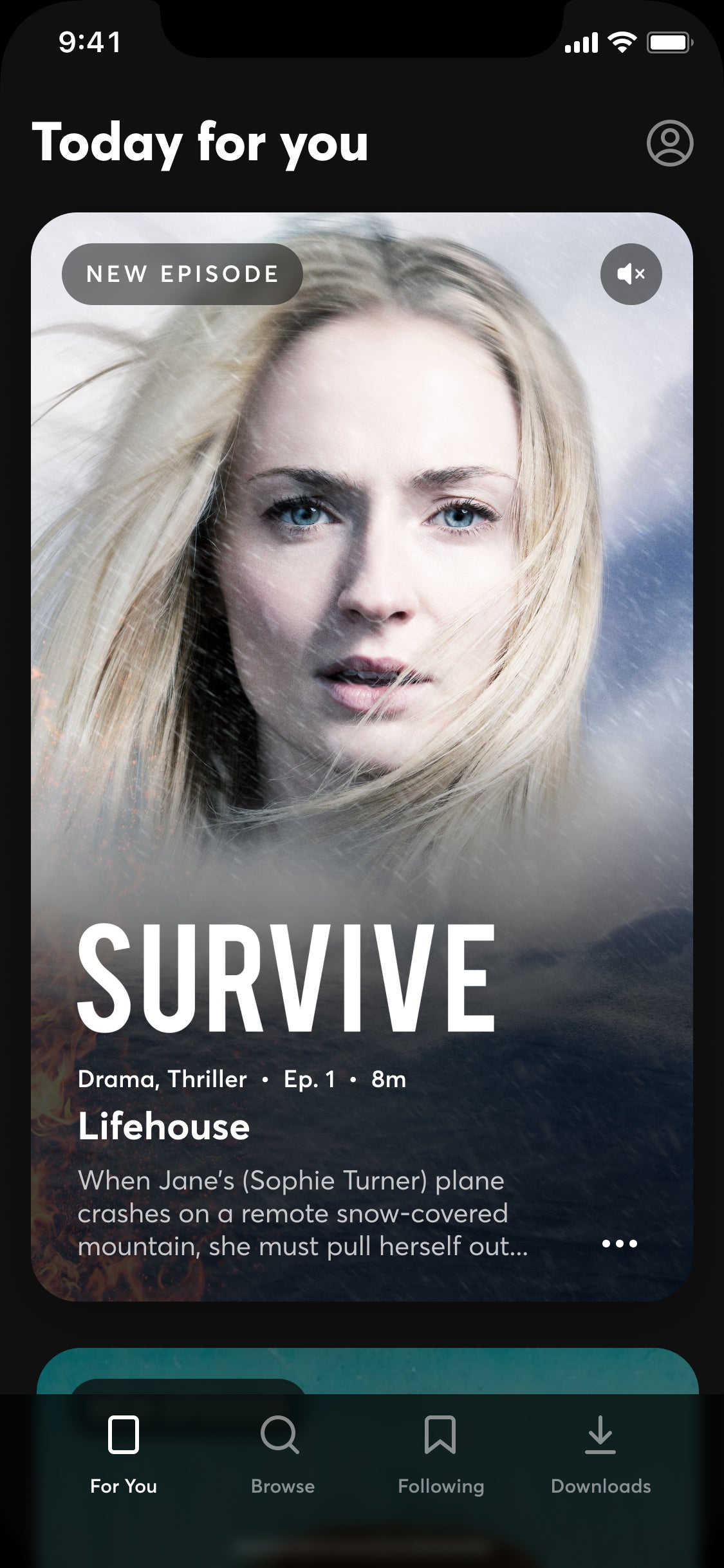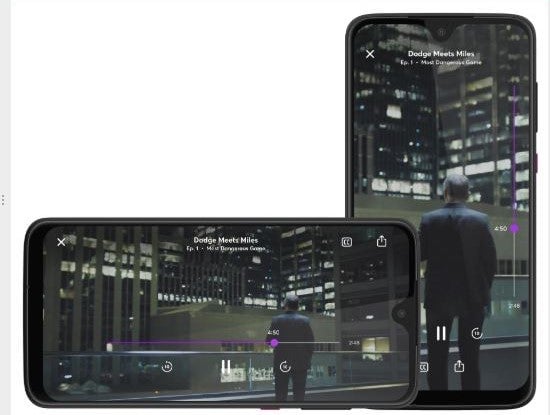Quibi isn’t TV. It’s fancy YouTube
The original pitch for Quibi, a new video app launching today (April 6), was that young people would pay a few bucks per month for premium original content designed to be watched on their phones in “quick bites” (hence its name) on the go. Netflix, but shorter. TikTok, but with more celebrities and better production values.


The original pitch for Quibi, a new video app launching today (April 6), was that young people would pay a few bucks per month for premium original content designed to be watched on their phones in “quick bites” (hence its name) on the go. Netflix, but shorter. TikTok, but with more celebrities and better production values.
Because of the coronavirus pandemic, however, nobody is commuting right now. Those brief gaps in the days of 35-and-younger US phone users—Quibi’s core demographic—are different from what they were a month ago. It’s unclear what time will be Quibi time, if there’s time for Quibi at all amid a saturated landscape for streaming video.
But Quibi will not be deterred and the app launched right on schedule. Whether or not the $2 billion gamble will survive long enough to outlast the pandemic and see its original vision through to a commuting, mobile-hungry America is another question entirely.
Last week, Quartz previewed the Quibi app on iPhone and sampled many of the 50 original series that debuted with the service today. For $5 per month with ads or $8 without (and starting with a 90-day free trial), Quibi users will get a daily stream of new content, including “Movies in Chapters” (essentially scripted films broken into episode-like installments), unscripted series (mostly reality shows and documentaries), and “Daily Essentials” (bite-sized news and culture shows). Every video on the service is under 10 minutes.
Quibi’s most important metric for success, according to its chief product officer, Tom Conrad, is the same as it is for Netflix and most other subscription services—paid subscribers. But Quibi has also sold $150 million in advertising prior to launch. Before each video, there is usually a 10-second ad. I saw the same one for T-Mobile—which is offering its family-plan customers a free year of Quibi—at least 10 times. Luckily, there are no ads that pop up in the middle of videos. At least not yet.
Conrad and the rest of the company’s top brass—founder Jeffrey Katzenberg (the former Walt Disney Studios chairman) and CEO Meg Whitman (the former head of eBay)—think their pitch to consumers still applies in today’s socially-distanced world, even if people aren’t commuting or taking breaks between classes. They posit that there are still plenty of “in-between moments” to warrant snacking on Quibi videos here and there throughout one’s quarantined day.
Indeed, the US and the rest of the world are streaming a lot more video. Netflix, HBO, and Disney are all seeing a surge in usage since the lockdowns began last month. It stands to reason that Quibi might experience the same as it launches into this unprecedented moment in the history of entertainment consumption.
The thing is, Quibi is nothing like Netflix, HBO, or Disney.
When you open the app, you’re greeted with a “For You” page of curated content that becomes more and more tailored to your tastes based on what you’ve already watched. This experience will be deeply familiar for those millennials and Gen Z-ers who frequent the mobile video app TikTok, and Quibi’s interface itself is similar to that of TikTok’s. Users scroll vertically, flinging tiles of content up and down across their screen—almost like Tinder, but for content. Below, a sparse menu offers users a few options: a search feature, a page to see which shows you’ve “followed,” and a downloads hub where the app puts all the content you’ve saved (yes, you can download shows to watch when you don’t have an internet connection, like when riding the subway).

The difference, of course, is that Quibi’s content creators are not teens doing dances, but rather famous actors making expensive, Hollywood-caliber content. The most popular YouTube creators spend between $500 and $5,000 per minute of content, according to Whitman. Quibi spends as much as $100,000 per minute ($6 million per hour) on some of its originals—right on par with an episode of TV on many broadcast or cable networks (but not quite Game of Thrones or The Mandalorian territory).
Quibi seems like it might be able to create a niche in unscripted comedy programming. The best content Quartz watched on the app was in this category: Chrissy’s Court, in which Chrissy Teigen presides over real small claims court disputes, and Punk’d, in which hip hop star Chance the Rapper hosts the revival of the popular MTV series where celebrities get pranked. (One of the victims is Addison Rae, a 19-year-old TikTok star with 31 million followers, showing Quibi knows its audience.) Those shows, and a few others of this ilk, are exactly the kind of breezy, enjoyably snackable content Quibi executives promised they’d deliver.
So far, the app’s attempt to mimic serious, prestige television is less successful. Survive, starring Game of Thrones‘ Sophie Turner as a suicidal woman surviving in the wild after a plane crash, is a humorless, morally dubious imitation of better survival shows. The Most Dangerous Game, Hollywood’s umpteenth attempt at the man-hunts-man concept, is fine (it stars a Hemsworth brother and is gamely directed by a Mad Men veteran) but unlikely to inspire passion. And Flipped, a comedy starring Will Forte and Kaitlin Olson as a couple that renovates a Mexican drug cartel’s mansions, is a disaster—a difficult thing for this Forte superfan to admit. (I laughed precisely once, in the opening scenes, when Forte’s character earnestly directs a school play about the 1911 Triangle Shirtwaist Factory fire called “Children of the Fire.”)
Quibi executives have said they don’t view Netflix and other TV networks and streaming services as competitors.While any service that offers subscription video—and hopes to attract the same pool of Hollywood names to its service—is ultimately in competition with one another, Quibi is simply not television. Its “quick bites” are not TV episodes. They’re something else entirely.
A Quibi show is as much TV as a TV show is a movie. It’s a new medium, borrowing concepts from episodic television the same way television borrowed concepts from 19th century serials. Because installments of series are so short—and series themselves only about the length of a long TV episode or a short feature film—the story structure is different. Virtually every “bite” ends in a cliffhanger. Viewers are thrown into shows with no scene-setting and little world-building. They’re Hollywood-directed and acted YouTube shorts.
There is no concept of the self-contained “TV episode” in a Quibi bite. While the best of prestige television episodes often tell quality stories of their own within the framework of a larger, serialized story, many Quibi episodes bleed into each other seamlessly as if they were films were broken down arbitrarily into five- to 10-minute increments. The Most Dangerous Game, for instance, is like watching seven minutes of The Hunger Games per day.
This kind of narrative storytelling doesn’t seem sustainable, even with today’s attention spans. Generations of culture have trained us to invest in characters, in their lives, in their dreams and failures, successes and tragedies. We’re willing to put some time into a long TV series, an elaborate book trilogy, a marathon two-night Broadway play, if it means there’s an emotional payoff. While lots of prestige TV and film have become too bloated, Quibi’s overly quick narrative offerings seem like an overcorrection. Hollywood had already been finding ways to make “prestige” content more snackable, like making more 30-minute dramas.
Quibi’s other chief innovation is its patented “Turnstyle” technology, which allows users to watch video in either portrait or landscape modes on their phones, and transition between the two as often as they want without the video buffering. The technology indeed works as promised, but none of the content Quartz previewed made much use of it. Vertical video shows only a fraction of the full picture—it’s claustrophobic and turns otherwise cinematic scenes into an image of lower quality and less information. I can’t fathom why anyone would choose to watch in vertical over landscape except in instances when the storytelling demands the shift. And from what we saw, no scene would have benefited from it.

The communal aspect of TV and film consumption we’re used to is also impossible for Quibi to provide unless it changes its core proposition. Right now, the app is only available on mobile. Conrad said the company isn’t philosophically against the idea of eventually making the platform available to watch on bigger screens, but that the data would have to tell them users want that option. As of today, it’s not clear how you can watch a Quibi with someone. The company is betting you won’t want to.
Much will depend on Quibi’s ability to transcend its platform and be shared and discussed on other social channels, the way that viral Netflix and TikTok content are. (To that end, the app gives users a prompt to share links to episodes on their own social media accounts.) The company may find that difficult, at least to start: 68% of respondents to a Hollywood Reporter poll conducted last month said they had never heard of Quibi. Only 5% said they had heard “a lot” about the app. And that’s despite the company airing a Super Bowl commercial in February to 100 million Americans.
And with so many Americans out of work or hurting financially, they might be reluctant to pay another $5 or $8 a month for a streaming video service when there are already so many others available. It was going to be a challenge for Quibi to break through even in ideal times. In the middle of a global recession, it becomes exponentially harder.
Still, many of us are helplessly, obsessively attached to our phones. According to eMarketer, Americans watch an average of 42 minutes of mobile video every day (that’s four-to-eight Quibis!), up from 34 minutes three years ago. That number is expected to rise every year until at least 2024. Quibi has a lot of money riding on the belief that it can become a part of those 42 minutes. To get there, it needs to lean into the unscripted content that works well on the platform, and leave the prestige TV to HBO.